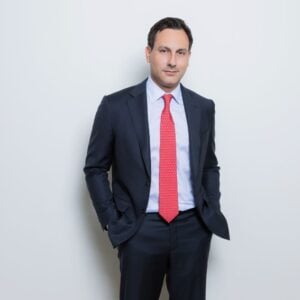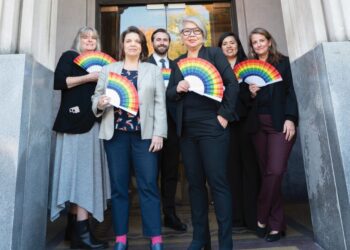Attorney at Law Magazine sat down with the partners at McArdle Franco PLLC in Miami to talk about how their business backgrounds and collaborative approach drive success in complex cases and pro bono work.
 George E. McArdle
George E. McArdle
AALM: How has your business background influenced your approach to solving complex legal issues?
GEM: Before I dedicated my professional life to the practice of law, I was a businessman and land developer. First, I was a banker in New York, and following an assignment in England, I was transferred to Florida where I specialized in loan workouts and established a workout department. This included taking possession of and completing golf resorts, country clubs, hotels, condominiums, warehouses, office buildings, and in the case of Cocoplum in Coral Gables, land development and a marina.
After leaving the banking business, I started a business that developed single-family home and condominium communities, retail spaces and a mixed-use parking structure.
This business and finance experience has allowed me to analyze legal issues from a unique and practical perspective, which has become part of the firm ethos. Our clients typically view our approach to resolving their business’ legal issues as a real asset.
AALM: Can you discuss a case or project in which your background in finance and real estate development played a crucial role in achieving a successful outcome for your client?
GEM: We represented a developer with loans that exceeded $100 million, all of which were personally guaranteed. During the 2008 downturn, the loans went into default. Unfortunately, none of the projects were completed at the time the lender ceased funding. With an understanding of the development and banking processes, we were able to structure workout programs that were beneficial to both our client and the lender. The result was a deed in lieu of foreclosure, no payments under the guarantee and a cash payment from the lender to our client.
AALM: How do you see public-private partnership projects evolving in the future?
GEM: With tightening budgets and the scarcity of development land, private-public partnerships present an attractive opportunity. My experience working with private-public partnerships has provided insight into the motivations and constraints of government officials and the legal constraints within which they operate. This has enabled us to develop good working relationships with officials even after bringing litigation to clarify certain issues.
 Xavier A. Franco
Xavier A. Franco
AALM: How has your experience in construction influenced your approach to resolving complex commercial and real estate disputes?
XAF: There is no substitute for experience. Experience teaches you the various ways an issue is likely to play out and allows you to better understand opposing parties’ motivations and concerns. This allows you to be a more effective advocate and negotiator.
AALM: Tell us about a challenging case you’ve handled, and how your approach helped achieve a successful resolution for your client?
XAF: We litigated a construction defect dispute for a hotel developer. The issues threatened to derail their significant investment. The lawsuit involved over a dozen trade contractors and design professionals, each represented by independent counsel experts. The issues were complicated and could easily become unwieldy. Ultimately, we were able to obtain strategic settlements with certain parties that resulted in increased exposure to the remaining parties. That strategy led to a favorable global settlement of the claims and a satisfactory resolution of the dispute for the client.
AALM: How do you see the role of bilingual attorneys evolving in the practice of law, particularly in diverse markets like Miami?
XAF: I find that the advantage presents in the rapport I’m able to build with clients whose native language is Spanish. Most clients who do business in Florida are at least conversational in English and can communicate their thoughts and ideas to attorneys not fluent in Spanish. However, I also find those clients appreciate the effort to communicate in their language, particularly when the stakes are high and the matter is a point of stress. The fear that they’re not fully informed because they may have missed something communicated to them in English only compounds that stress. I think attorneys who make the effort to communicate in their client’s native language hold a competitive advantage over others who are unable or unwilling to do so.
AALM: How does McArdle Franco select the cases for its pro bono practice?
XAF: Where a case presents an opportunity to address an objective injustice and involves subject matter within our expertise our firm is willing to consider taking the case on a pro-bono basis if the client is unable to pay our fee. Usually, these opportunities would be presented to partnership for discussion and voting.
 Michael A. Mullavey
Michael A. Mullavey
AALM: How has your background in business administration influenced your approach to complex litigation matters?
MAM: As a law student, I realized early on that I wanted to pursue commercial litigation. But with an undergraduate degree in English, I felt I was missing educational and practical business experience. I decided to pursue my JD/MBA to learn the language of business. The decision proved invaluable as I can approach litigation matters with an informed eye toward my clients’ practical business realities. Litigation can often lead to a technical victory, but one that provides little business benefit to a litigant. I try to be conscious of this in every matter so I can understand my clients’ bottom line and plan accordingly.
AALM: Given your experience across various forums, how do you determine the most effective dispute resolution strategy for clients in complex commercial and real estate litigation?
MAM: The most effective dispute resolution strategy depends entirely on the client’s goals, and frequently, it’s a moving target. The best way to navigate this problem is to establish effective and continued communication with the client. I have to know their hopes and concerns to properly counsel their steps forward. This is true regardless of the forum. Certain forums come with their own realities, and you have to adapt accordingly. I find the best resource in this is simply speaking with the client and getting to the root of their problem. The path forward usually falls into focus from there.
AALM: Tell us about your firm’s collaborative approach, and how this translates into better outcomes for your clients.
MAM: Our office doors aren’t just metaphorically always open; they are literally always open. We’ve gathered a team of people who are so passionate about problem solving that we can’t help but poke our noses in when we hear other team members discussing a matter. While our attorneys specialize in different practice areas, we never close ourselves off to the insights that collaboration provides.
AALM: What advice would you give to young lawyers who are just starting their careers?
MAM: Embrace your nerves, they’re telling you you’re invested in the outcome of your work. Don’t shy away from putting yourself out there. Learning happens on the edge of comfortable.








